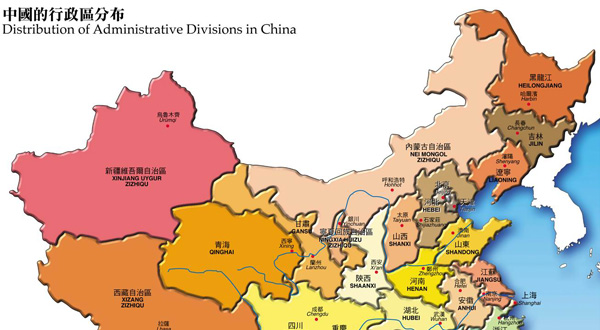Now - 01:44:51
The structure of the root of a plant. The structural features of the root
Living organisms studying science biology. The structure of the root of the plant is considered in one of the sections of botany.
The Root is an axial vegetative organ of the plant. Characterized by unlimited apical growth and radial symmetry. The structural features of the root depend on many factors. It is the evolutionary origin of the plant, its belonging to a particular class, habitat. The main functions of the root can be called the strengthening of the plants in the soil, part in vegetative reproduction, stock, and synthesis of organic nutrients. But the most important function, ensuring the vital activity of the plant organism, soil nutrition, which is in the process of active absorption from the substrate is water that contains dissolved mineral salts.
Types of roots
The External structure of the root largely due to the fact which it relates.
- Main root. His education is derived from embryonic root when the seed plants are starting to sprout.
- Adventitious roots. They can appear on various parts of the plant (stem, leaves).
- Lateral roots. They form a branching, starting from pre-existing roots (main or subordinate).
Types of root systems
The Root system is the collection of all the roots available to the plant. The external view of the aggregate at different plants can vary greatly. The reason for this is the presence or absence and different degrees of development and severity of various types of roots.
Depending on this factor, there are several types of root systems.
- Tap roots. The name speaks for itself. The main root acts as a rod. It is well defined in size and length. The structure of the root this type is typical for dicotyledonous plants. This is sorrel, carrots, beans, etc.
- Fibrous root system. For this type of characteristic the features. The external structure of the root, which is the main, does not differ from that in the side. It does not stand out in the crowd. Formed from the embryonic root, it grows very long. Mackova root system characteristic of monocots. This cereals, garlic, Tulip, etc.
- The Root system is of mixed type. Its structure combines features of the two described above types. The main root is well developed and stands out. But it is strongly developed adventitious roots. Characteristic for tomatoes, cabbage.
Historical development of the root
If you argue from the point of view of phylogenetic development of the root, its formation occurred much later than the formation of stems and leaves. Most likely, the impetus for this was the emergence of plants on land. In order to gain a foothold in the solid substrate, representatives of the ancient flora needed something that could provide support. In the process of evolution first formed korepodobnaya underground branches. Later they gave rise to the development of the root system.
Recommended
"Knowledge is light and ignorance is darkness": the value, meaning and alternatives
There are some sayings that would seem to need no explanation, such as “teaching & ndash; light and ignorance – darkness”. But some still do not understand their meaning. But not only for such people is written by our article. I...
What was invented by Mendeleev for the army. The history and fate of the invention
D. I. Mendeleev was a brilliant Russian scientist-polymath, who made many important discoveries in various fields of science and technology. Many people know that he is the author of “Fundamentals of chemistry" and the periodic law of chem...
The origin of the Slavs. The influence of different cultures
Slavs (under this name), according to some researchers, appeared in the story only in 6 century ad. However, the language of nationality bears the archaic features of the Indo-European community. This, in turn, suggests that the origin of the Slavs h...
Root shaped case
The Formation and development of the root system is carried out throughout the life of the plant. The structure of the root of the plant are not expected to have leaves and buds. Its growth is due to the increase in length. At the point of growth it is covered with a root-shaped case.
The Process of growth is associated with the division of the meristem cells. It is under the root-shaped case, performing the function of protecting the delicate dividing cells from damage. The shaped case – is a set of thin-walled living cells in which constantly occurs the process of updating. That is, the promotion of root in the soil of the old cells are gradually exfoliated, and in their place grow new ones. Also located on the outside of the cells chehlika secrete mucus. It facilitates the promotion of root in the hard soil substrate.
It is well Known that depending on the environment structure of plants varies greatly. For example, aquatic plants do not have root-shaped case. In the course of evolution they have formed with another device – water pocket.
The structure of the root: zone of division, zone of growth
Cells, emerging from the meristem, over time, begin to differentiate. Thus are formed the root zone.
The Area of the division. It is presented by meristem cells, which subsequently give rise to all other cell types. The size of the zone – 1 mm.
The growth Zone. Presents a smooth plot, whose length is from 6 to 9 mm. immediately behind the area of the division. For cells characterized by intensive growth, during which they greatly lengthen and gradual differentiation. It should be noted that the process of fission in this area almost not possible.
The intake Area
This section of the root length of several centimeters is also often called the zone of root hairs. This name reflects the structural peculiarities of the root in the area. There are outgrowths of the cells of the epidermis whose size can vary from 1 mm to 20 mm. It is the root hairs.
The intake Area – a place where there is an active absorption of water, which contains dissolved minerals. The activity of the cells of root hairs, in this case, you can compare with the work of the pumps. This process is very energy consuming. Therefore, in the cells of the zone of suction contains large number of mitochondria.
It is Very important to pay attention to one feature of the root hairs. They are able to produce a special mucus, containing carbonic, malic and citric acid. Mucus helps dissolve mineral salts in water. The soil particles due to the mucus like a stick to root hairs, facilitating the process of absorption of nutrients.
Structure of root hairs
Increase the square area of absorption occurs through root hairs. For example, the number at rye reaches 14 billion, forming a total length of 10,000 kilometers.
The appearance of root hairs makes them look like white fuzz. They live long – from 10 to 20 days. On the formation of new plant organism takes very little time. For example, the formation of root hairs of young seedlings of Apple trees is carried out for 30-40 hours. The site where occurred the death of these unusual growths, even for some time can absorb water, and then it covers the tube, and this ability is lost.
If we talk about the structure of the sheath of the hair, first of all, it should highlight its subtlety. This feature helps the hair to absorb nutrients. His cage is almost fully occupied by the vacuole surrounded by thin layer of cytoplasm. The core is located in the upper part. The space near the cells of the mucous is a special case, contributing to the bonding of root hairs with fine particles of soil substrate. Due to this, the hydrophilicity of the soil increases.
Cross the structure of the root in the intake area
The Zone of root hairs is also often called the zone of differentiation (specialization). This is no accident. It is here in cross section you can see some layering. It is due to the separation of layers within the root.
A table of ‘the structure of the root on cross-section” below.
| Layer | Structure and function |
| IsoDerm | Single layer of cells epithelial tissue, which are capable of forming root hairs. |
| Primary crust | Several layers of cells of the main tissue involved in the transport of nutrients from the root hairs to the Central axis of the cylinder. |
| Pericycle | Cells of the meristem that are involved in the initial formation of lateral and adventitious roots. |
| The Central axis cylinder | Conductive tissue (phloem, wood), forming together a radial conductive beam. |
It Should be noted that the inside of the bark is also a distinction. Its outer layer is called ectoderm, internal – the endoderm, and between them is the main parenchyma. It is in this intermediate layer, the process of directions of solutions of nutrients in the vessels of the wood. Also, in the parenchyma synthesized some vital for plant organic matter. Thus, the internal structure of the root allows you to fully appreciate the significance and importance of the functions of each layer.
Area of the
Is located above the suction area. The largest length and most durable part of the root. This is where the movement of the vital vegetable substances. This is possible thanks to the development of conducting tissues in this area. The internal structure of the root in the zone of the determines its ability to transport substances in both directions. In the upward current (up) is the movement of water with dissolved mineral compounds. And delivered down organic compounds that are involved in the functioning of the cells of the root. Area....
Article in other languages:
BE: https://tostpost.com/be/adukacyya/21189-budova-koranya-rasl-ny-asabl-vasc-budovy-koranya.html
KK: https://tostpost.com/kk/b-l-m/21186-rylysy-tamyry-s-md-kter-rylysyny-erekshel-kter-tamyry.html
PL: https://tostpost.com/pl/edukacja/21154-budowa-korzenia-ro-liny-cechy-budowy-korzenia.html
TR: https://tostpost.com/tr/e-itim/21191-yap-k-k-bitkiler-yap-zellikleri-k-k.html
UK: https://tostpost.com/uk/osv-ta/21176-budova-korenya-roslini-osoblivost-budovi-korenya.html

Alin Trodden - author of the article, editor
"Hi, I'm Alin Trodden. I write texts, read books, and look for impressions. And I'm not bad at telling you about it. I am always happy to participate in interesting projects."
Related News
Human pressure as a key indicator of the health status
human Pressure – blood pressure, the indicators of which are due to the activity of the heart. When measuring pressure is taken into account the so-called upper-systolic level, which occurs at the moment of contraction of th...
The table "Three forms of verb in English." Verbs correct and incorrect
English is the language of the exceptions where when learning a new grammatical rules the students have to face with a dozen but in which this rule does not apply. One of these rules is the use of irregular verbs in the past tense...
Louis-Philippe: king of the July monarchy
the Last French monarch with the Royal title of Louis-Philippe ruled from 1830 to 1848. He was a representative of one of the lateral branches of the Bourbons. His era is also known in history as the July monarchy.Childhood and yo...
Reproductive isolation: definition, causes. Forms of reproductive isolation: examples
panmictic organisms (reproducing sexually) is a kind of – is a set of organisms similar in a whole range of signs, are able to freely interbreed with the formation of fertile offspring. The concept of insulation is applied i...
Chechnya is... the Subject of the Russian Federation, the Chechen Republic
very Rich and complex history of our country contributed to the emergence of the modern individual regions of the Russian Federation. Some people under the protection of Russia in the Middle ages were fleeing from the constant att...
Chemical weapons and its types
One of the weapons of mass destruction is the chemical weapons. The principle of its action is the toxic poisoning of environment and people. It may be in the form of rockets, bombs, mines or other means of application. Thei...



























Comments (0)
This article has no comment, be the first!